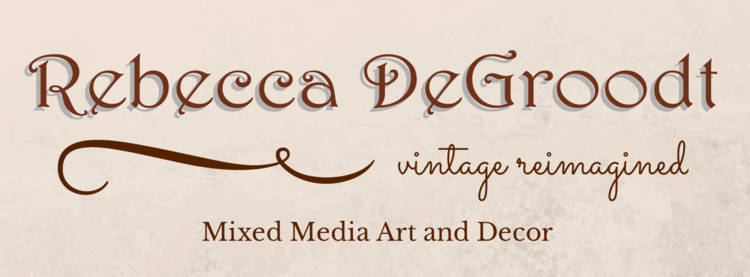Gifts from the Sea
Do you find it hard to walk across a beach and not look for shells? I do. They are so alluring with their soft colors and curving shapes — little bits of sculpture that the sea just tosses nonchalantly up on the shore.
Souvenir shell box from the late 19th or early 20th century that (I believe) belonged to my great grandmother.
Since before our girls were born we have spent many if not most of our vacations on Sanibel Island, FL. Sanibel is famous for its amazing shells. The way shells collect on the beaches has something to do with how the island is positioned— like a boomerang, off the south west coast of Florida. While I’m not totally clear on the oceanography behind it, the gulf waters spit up shells by the bucketful on Sanibel’s beaches and shelling is a very popular activity. I’m kind of obsessed; I sometimes have to forcefully remind myself to look at the beautiful water, the sky . . . but it’s so meditative to gather shells. Each little gem I pick up, from the teeny, tiny perfect Murex to the random rectangular fragment with edges worn as smooth as glass — tells me something about what it could be.
The pieces in the photo collage above are examples of Victorian and early 20th century shellwork. It’s interesting to me that my great grandmother had one of these souvenir boxes — very similar to the ebay listings shown in the bottom left corner of the collage. Where did this wife of a small-time farmer in southern Indiana get one of these? I can’t imagine she ever took a sea-side vacation; maybe someone brought it to her.
Shells make intriguing frames for photos, prints and mirrors, particularly if the pictures are nautical-themed. The antique example here (bottom) features a print of a ship. I made a piece with a similar look (top) for a sea-themed mantel arrangement. I cut a picture from an old art book and adhered it to canvas board, then glued the shells directly on the print. I used a dark glaze to give the piece an aged look.
It seems we have always felt drawn to shells, given that shells have been used to decorate people, objects and spaces since ancient times. Increasing openness to scientific curiosity led to shell collecting becoming popular among the aristocracy in the 16th century; by the 17th and 18th century the swirling lines and curves of the popular Rococo style made shells one of the most common decorative motifs. Everything from tables and chandeliers to the walls of elaborate grottos and follies got the shell treatment. The sailors manning ships on the trade routes of the early 19th century bought shell-encrusted boxes and pictures in the Caribbean and took them home as gifts to their sweethearts. These souvenirs, often heart-shaped or featuring heart-shaped designs, came to be known as Sailor’s Valentines. By the second half of the 19th century, better transportation created more opportunities for the average person to travel, and a very large market for souvenir sellers. In the late Victorian era shellwork boxes, frames and “valentines” were made in large numbers — both for the souvenir trade and by ladies who found that covering small boxes, bottles, and such with artistic arrangements of shells made a satisfying pastime.
If you’d like to see more examples of shell art, decorating and craft ideas, check out my Shellwork Pinterest board. For lots of information and inspiration, Shell Chic by Marlene Hurley Marshall is a gorgeous coffee-table book covering both history of the craft and how to’s for simple to complex projects.
There are artists today making traditional Sailor’s Valentines, which typically consists of a very precise, detailed design within a hinged wooden box. They are particularly popular in New England, where artists often use nautical-themed scrimshaw on ivory as the focal point of their design. Many of these artists exhibit and compete at the annual Sanibel Shell Show.
So I’m in good company in my shell obsession. I think about this when I find I’ve spent an hour or more on the beach with my eyes cast down searching for an irresistible glimmer in the sand. But here in Raleigh, I need to get going on actually producing some of the many projects I dreamed up on the beach. I feel like I owe it to the shells.
I was so pleased to get my latest copy of Somerset Studio magazine and see that they included my submission for their “artwork incorporating stitching” theme in the Spring issue.






